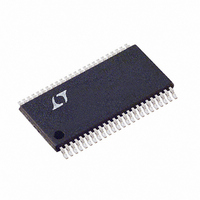LTC1750IFW Linear Technology, LTC1750IFW Datasheet - Page 10

LTC1750IFW
Manufacturer Part Number
LTC1750IFW
Description
IC ADC 14BIT 80MSPS SMPL 48TSSOP
Manufacturer
Linear Technology
Datasheet
1.LTC1750CFW.pdf
(20 pages)
Specifications of LTC1750IFW
Number Of Bits
14
Sampling Rate (per Second)
80M
Data Interface
Parallel
Number Of Converters
1
Power Dissipation (max)
1.69W
Voltage Supply Source
Single Supply
Operating Temperature
-40°C ~ 85°C
Mounting Type
Surface Mount
Package / Case
48-TFSOP (0.240", 6.10mm Width)
Lead Free Status / RoHS Status
Contains lead / RoHS non-compliant
Available stocks
Company
Part Number
Manufacturer
Quantity
Price
Part Number:
LTC1750IFW#PBF
Manufacturer:
LINEAR/凌特
Quantity:
20 000
APPLICATIO S I FOR ATIO
LTC1750
TI I G DIAGRA
DYNAMIC PERFORMANCE
Signal-to-Noise Plus Distortion Ratio
The signal-to-noise plus distortion ratio [S/(N + D)] is the
ratio between the RMS amplitude of the fundamental input
frequency and the RMS amplitude of all other frequency
components at the ADC output. The output is band limited
to frequencies above DC to below half the sampling
frequency.
Signal-to-Noise Ratio
The signal-to-noise ratio (SNR) is the ratio between the
RMS amplitude of the fundamental input frequency and
the RMS amplitude of all other frequency components
except the first five harmonics and DC.
Total Harmonic Distortion
Total harmonic distortion is the ratio of the RMS sum of all
harmonics of the input signal to the fundamental itself. The
out-of-band harmonics alias into the frequency band
between DC and half the sampling frequency. THD is
expressed as:
10
W
U
ANALOG
CLKOUT
INPUT
DATA
ENC
t
3
U
N
•
U
t
t
7
4
t
6
W
t
1
t
5
W
DB13 TO DB0
DATA (N – 5)
t
8
U
t
2
where V1 is the RMS amplitude of the fundamental fre-
quency and V2 through Vn are the amplitudes of the
second through nth harmonics. The THD calculated in this
data sheet uses all the harmonics up to the fifth.
Intermodulation Distortion
component, the ADC transfer function nonlinearity can
produce intermodulation distortion (IMD) in addition to
THD. IMD is the change in one sinusoidal input caused by
the presence of another sinusoidal input at a different
frequency.
If two pure sine waves of frequencies fa and fb are applied
to the ADC input, nonlinearities in the ADC transfer func-
tion can create distortion products at the sum and differ-
ence frequencies of mfa nfb, where m and n = 0, 1, 2, 3,
etc. The 3rd order intermodulation products are 2fa + fb,
2fb + fa, 2fa – fb and 2fb – fa. The intermodulation
distortion is defined as the ratio of the RMS value of either
input tone to the RMS value of the largest 3rd order
intermodulation product.
If the ADC input signal consists of more than one spectral
THD
20
t
t
0
10
Log
DB13 TO DB0
DATA (N – 4)
V
2
2
V
3
t
2
9
V
1
V
4
2
DATA (N – 3)
...
Vn
1750 TD
2
1750f














